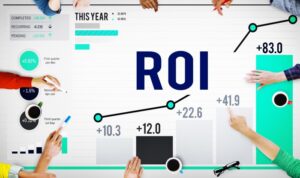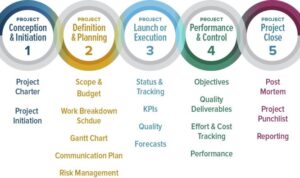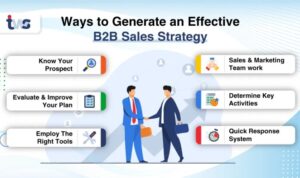Customer Acquisition Cost sets the stage for this enthralling narrative, offering readers a glimpse into a story that is rich in detail with American high school hip style and brimming with originality from the outset.
Understanding how to calculate and optimize CAC is key for businesses looking to thrive in today’s competitive landscape.
Definition and Importance of Customer Acquisition Cost
Customer Acquisition Cost (CAC) refers to the total cost a business incurs to acquire a new customer. This includes expenses related to marketing, sales, advertising, and any other activities aimed at attracting and converting potential customers into paying ones.
Understanding CAC is crucial for businesses as it directly impacts profitability and sustainability. By knowing how much it costs to acquire a customer, companies can make informed decisions regarding their marketing strategies, budget allocation, and pricing models. It helps businesses assess the effectiveness of their customer acquisition efforts and optimize their resources for maximum return on investment.
Examples of Industries where Calculating CAC is Essential
- In the SaaS (Software as a Service) industry, calculating CAC is crucial due to the subscription-based model. Companies need to know how much it costs to acquire a customer compared to the lifetime value of that customer.
- E-commerce businesses heavily rely on digital marketing and online advertising to attract customers. Understanding CAC helps these companies optimize their marketing campaigns and improve customer acquisition efficiency.
- Telecommunication companies invest heavily in acquiring new customers through various promotional offers. Calculating CAC allows them to evaluate the effectiveness of these campaigns and adjust their strategies accordingly.
Calculating Customer Acquisition Cost

When it comes to calculating Customer Acquisition Cost (CAC), there is a specific formula that businesses use to determine how much they are spending to acquire each new customer. This metric is crucial in understanding the effectiveness of marketing strategies and the overall health of a company’s growth.
CAC Formula
The formula for calculating CAC is quite straightforward:
CAC = Total Sales and Marketing Costs / Number of New Customers Acquired
Variables in CAC Calculations
- Total Sales and Marketing Costs: This includes all expenses related to sales and marketing efforts, such as advertising, promotions, salaries, and any other costs incurred to attract and convert customers.
- Number of New Customers Acquired: This refers to the total count of new customers gained during a specific period, typically tied to a marketing campaign or initiative.
Variability Across Marketing Channels
Different marketing channels can have varying impacts on CAC due to their unique characteristics and audience reach. For example:
- Online Advertising: Channels like Google Ads or social media platforms may have higher CAC due to intense competition and bidding wars for ad space.
- Inbound Marketing: Content marketing or strategies could result in lower CAC as they attract organic traffic and leads without direct advertising costs.
- Referral Programs: Leveraging existing customers to bring in new leads can significantly reduce CAC by tapping into loyal customer networks.
Factors Affecting Customer Acquisition Cost
Customer Acquisition Cost (CAC) is influenced by various factors that play a crucial role in determining the overall cost of acquiring new customers. Understanding these factors is essential for businesses to optimize their marketing strategies and maximize returns on investment.
Key Factors Impacting CAC, Customer Acquisition Cost
Several key factors can impact Customer Acquisition Cost:
- The effectiveness of marketing channels: The choice of marketing channels, such as social media, search engine marketing, or email campaigns, can significantly affect CAC.
- Target audience segmentation: Proper segmentation of the target audience helps in reaching potential customers more efficiently, reducing CAC.
- Competition in the market: The level of competition in the industry can influence the cost of acquiring customers, as businesses may need to invest more to stand out.
- Seasonality and trends: Changes in market trends and seasonal fluctuations can impact CAC, requiring adjustments in marketing strategies.
- Product pricing and value proposition: The pricing strategy and value proposition of the product or service offered can affect how much customers are willing to pay, thus influencing CAC.
Customer Behavior’s Influence on CAC
Customer behavior plays a crucial role in determining CAC:
- Conversion rates: The rate at which leads convert into paying customers directly impacts CAC, as higher conversion rates result in lower acquisition costs.
- Retention and repeat purchases: Customers who make repeat purchases or become loyal to the brand contribute positively to reducing CAC over time.
- Referral and word-of-mouth marketing: Customers who refer new clients or engage in word-of-mouth marketing can help in lowering CAC through organic growth.
Role of Customer Lifetime Value in CAC
Customer Lifetime Value (CLV) is a crucial metric that influences CAC:
- CLV calculation: Understanding the potential value a customer can bring over their lifetime helps in determining how much can be spent on acquiring them, impacting CAC.
- Segmentation based on CLV: Segmenting customers based on their lifetime value allows businesses to allocate resources effectively, optimizing CAC in the process.
- Retention strategies: Investing in customer retention based on CLV analysis can lead to higher customer lifetime values and lower CAC in the long run.
Strategies to Optimize Customer Acquisition Cost

In order to reduce Customer Acquisition Cost (CAC) and improve marketing ROI, it is crucial to implement effective strategies that target the right customer segments and maximize the efficiency of your marketing efforts.
Targeting the Right Customer Segments
Identifying and focusing on the most profitable customer segments can significantly lower your CAC. By understanding the characteristics, behaviors, and needs of your ideal customers, you can tailor your marketing campaigns to reach them more effectively. This targeted approach not only reduces wasted resources but also increases the likelihood of acquiring high-value customers who are more likely to make repeat purchases.
Implementing Cost-Effective Marketing Channels
Utilizing the most cost-effective marketing channels can help lower your CAC. By analyzing the performance of different channels and prioritizing those that generate the highest return on investment, you can optimize your marketing spend and reach your target audience more efficiently. Whether it’s social media, email marketing, content marketing, or paid advertising, focusing on channels that deliver the best results can help you maximize your marketing ROI while minimizing CAC.
Enhancing Customer Retention Strategies
Improving customer retention rates can have a positive impact on CAC. By providing exceptional customer service, personalized experiences, and loyalty programs, you can increase customer lifetime value and reduce the need to constantly acquire new customers. Investing in retention strategies not only fosters customer loyalty but also lowers the overall cost of acquiring and retaining customers over time.
Testing and Optimization
Continuously testing and optimizing your marketing campaigns is essential for reducing CAC. By analyzing data, tracking key metrics, and experimenting with different strategies, you can identify what works best for your target audience and make informed decisions to improve campaign performance. A/B testing, customer feedback, and data-driven insights can help you refine your approach and minimize CAC while maximizing results.





